Now THAT Was a Bike: Charlie Cunningham's Prophetic CC Proto
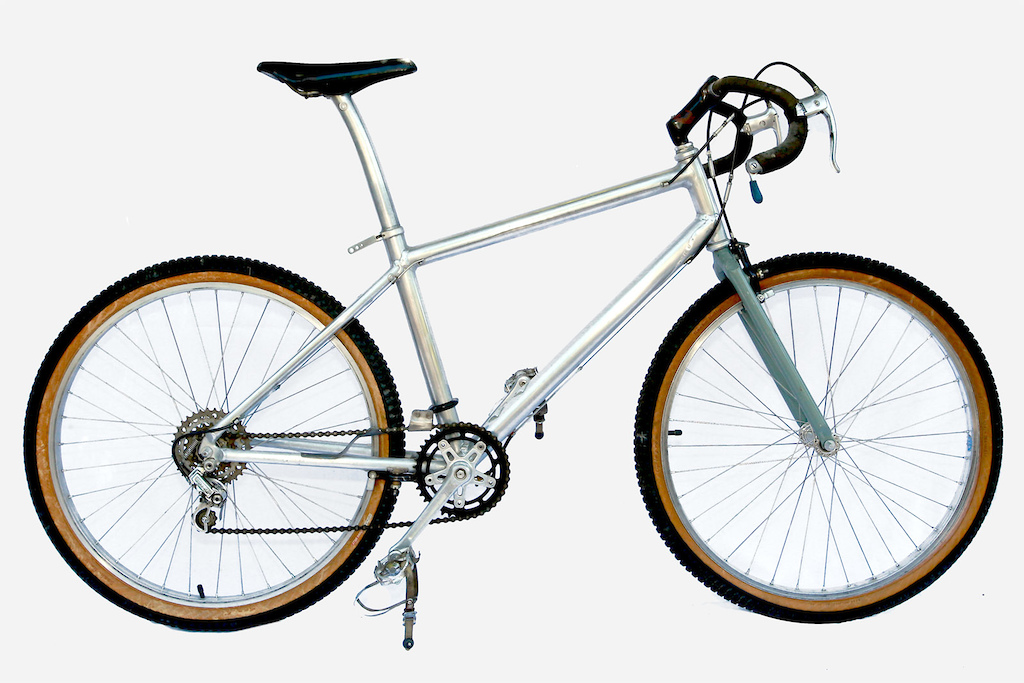
Charlie Cunningham's first creation, named "CCproto" was finished in 1978 and is contemporary today. - Cunningham Bicycles photo
To put it bluntly, if it had to do with mountain bikes and it was either invented or became popular before the year 2000, there is a good chance that Charlie Cunningham had either filed the patent, sketched a drawing, made a prototype, or discarded the concept as fruitless. I can say that without modification. Charlie's rare combination of creative and analytical genius, combined with a soul that always seemed to be in the moment, rendered him immune to cycling's most toxic poisons: historical precedence and current trends. Freed from the litany of recurring mistakes that so often dim the industry's brighter lights, Cunningham laid down the DNA of the modern mountain bike so early in its history, that many so-called inventors are still congratulating themselves for reinventing his inventions.
Charlie built his first bike over the course of a year from 1978 to '79 and today, it sits in the Marin Museum of Bicycling. Cunningham (no relation to RC) chose oversized aluminum tubes for his "CC Proto" as it came to be known, and TIG welded the thin-wall pipes together into a diamond frame with a dramatically sloping top tube to save weight and add stiffness. His low-slung top tube required a tall seat post, and if one existed longer than 220 millimeters (they did not), it would have been too skinny and
Charlie built his first bike over the course of a year from 1978 to '79 and today, it sits in the Marin Museum of Bicycling. Cunningham (no relation to RC) chose oversized aluminum tubes for his "CC Proto" as it came to be known, and TIG welded the thin-wall pipes together into a diamond frame with a dramatically sloping top tube to save weight and add stiffness. His low-slung top tube required a tall seat post, and if one existed longer than 220 millimeters (they did not), it would have been too skinny and
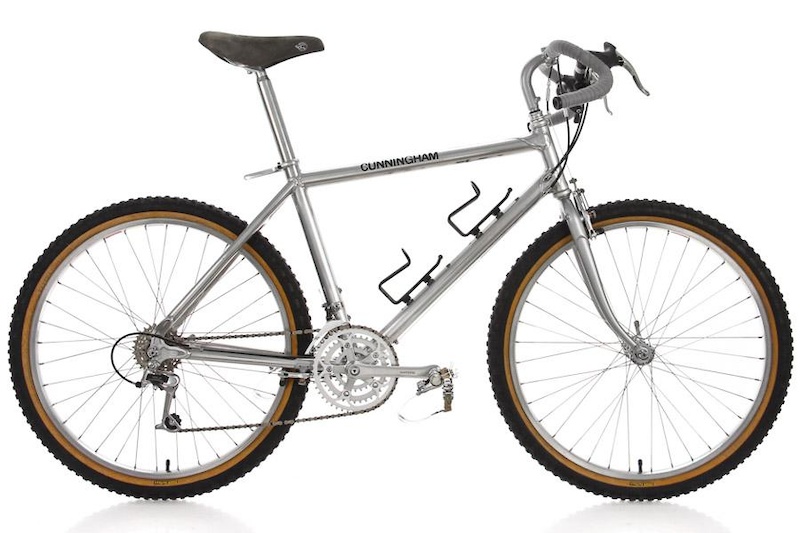
The 1998 Racer number 22 is owned by the Pro's Closet where it was restored with period components. - Pros Closet photo
Somewhere in that 12-month gestation period, Charlie realized that road bike drivetrains, with their limited gear ratios and narrow chain lines, were not going to serve well on the dirt. Charlie abandoned the front derailleur from the start, choosing a single, 42-tooth chainring on the crankset and then fashioned a top-mount chain guide from titanium. At the time, most freewheel cassette cogs topped out at 26 teeth, but Charlie dug around until he found larger cogs and then brazed them to an existing freewheel. His first wide-range freewheel was a 13 by 34 five-speed (Yep that's all we had to begin with). Later, component makers increased the cassette count and by 1982, Charlie was hand-building limited-production seven-speed 12 by 38-tooth freewheels.
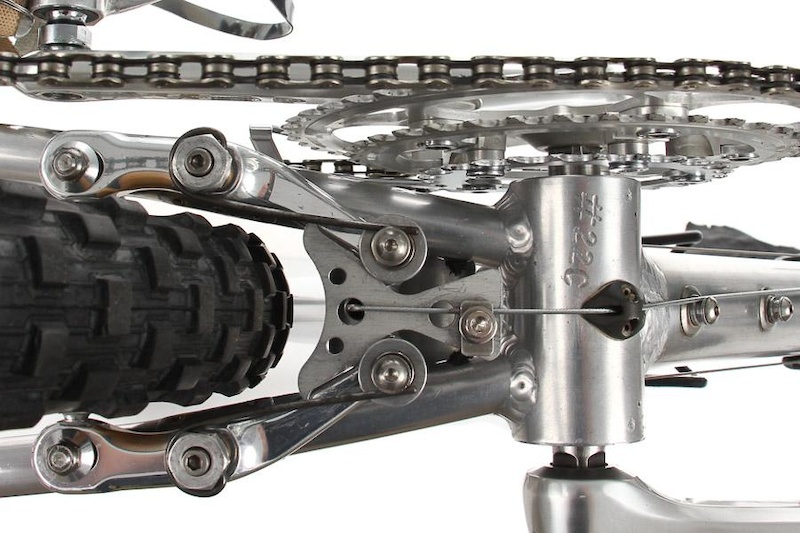
Roller Cam brakes and their torsion-bar springs were some of Charlie's inventions. The dual taper of the wedge allowed the brake pads to set farther from the rims without compromising modulation. - Pros Closet photo
One-by drivetrains today offer the same benefits that Cunningham was seeking in '78. Moving the chainring outwards and eliminating the front changer allowed the inventor to shorten the chainstays without sacrificing tire clearance. Restricted by the confines of 120-millimeter-wide bottom bracket axles, road bike-sized chainrings, and 126-millimeter wide rear hub, "short" chainstays measured 18 to 19 inches in 1979. Charlie's first bike, however, had 17-inch chainstays, which are compact by today's standards, but he could not pull off that feat without another prophetic innovation. Charlie widened the rear axle spacing from the existing 126-millimeter roadie standard to 135 millimeters, which centered the rim between the hub flanges and corrected the chain line for his one-by drivetrain.
Compare Cunningham's first design with those of other early mountain bike makers and it's clear that he was looking much farther ahead. Existing frame and component makers were clinging to traditional construction methods and established standards that had already failed to meet the demands of mountain bikers, so if he wanted innovative products, he had to make them himself. Cycling's establishment would take well over a decade to catch up with his first bike, and Charlie was just getting warmed up.
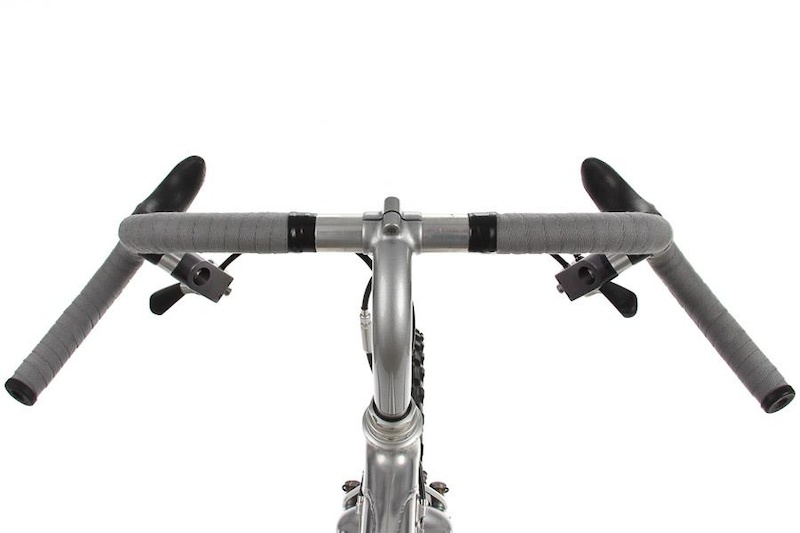
Not for you? John Tomac raced downhill with these bars to keep him sharp while he was a pro road racer in 1991 for Team 7 Eleven in Europe. - Pros Closet photo
It was a foregone conclusion that existing forks were not going to hold up to the rigors of trail riding. Cunningham made his own fork for the CCProto using straight fork blades made from butted steel top tubes and later integrated a curved, tubular crown that became his trademark fork, The futuristic-looking fork was considered ugly by many - but elegant by those lucky enough to ride them. In keeping with his wider rear axles, Charlie also widened his front axle width from 100 to 110 millimeters for extra rigidity. The simplicity of his tubular fork design influenced the wholesale switch to the "unicrown" fork in the pre-suspension era.
One feature that Cunningham clung to that was not widely adopted was his trademark dropped handlebar. Reportedly, the first renditions were off-the-shelf bars (the widest he could find) that were bent into a new flared shape by Charlie to clear the rider's wrists while descending in the drops. He developed an external clamp-on stem like we use today, but with a much higher rise to get his hands in the correct position. His CC Proto used a simple bar-end shift lever, but later models came equipped with a clever adapter that put the thumb-shifter inside of the brake lever so the rider could switch gears without abandoning control of the brakes. Charlie's handlebar only enjoys a cult following today, but a more moderate version of its flared shape has been universally adopted by the road community - as has pairing the brake levers with the shifting controls
Charlie's career as a mountain bike builder produced less than 200 bicycles, hand made in a workshop that has been described by visitors as a farm shed. At a time when a high-end mountain bike cost around $1800, a Cunningham was around $4200. Cunningham would eventually partner with Mark Slate, his trusty employee, and fellow mountain bike maker Steve Potts, to found Wilderness Trail Bikes (WTB). Along the way, Cunningham invented roller-cam rim brakes, which increased the power and eliminated the clearance issues of the cantilever-type brakes of the time, and grease-injection hubs and bottom brackets. Among his many innovations, Charlie also laid down the foundations of mountain bike tire design based upon the actual strike angles of the tread blocks in relation to cornering and straight-line travel. The WTB partnership was mysteriously dissolved in 2002, reportedly, after a contentious takeover by WTB CEO Patrick Seidler, after which, Cunningham's focus shifted away from mountain bikes.
At present, there are as many of Cunningham's creations in museums as there are still being ridden. He guaranteed them for life. Charlie is a quiet person who shuns the limelight. The penalty of being as far ahead of the curve as Charlie was is that many of his inventions were forgotten before their time was realized by rank and file riders. It is understandable then, that the short history of our sport has not highlighted his influence upon its development. The two bicycles featured here, the CCproto, owned by Charlie and on display at the Mountain Bike Hall of fame, and the 1988 Racer 22C, owned by the Pros Closet, are examples of why we should.
Sadly, the man who laid down the DNA of the modern hardtail cross-country bike suffered a head injury while riding a few years ago. Assisted by his wife, Jacquie Phelan, and donations from friends, Charlie is slowly making inroads on his recovery and the news is hopeful. For more information on one of the mountain bike's most brilliant and creative minds, visit the Cunningham Bicycles web page.
Author Info:
Must Read This Week
Sign Up for the Pinkbike Newsletter - All the Biggest, Most Interesting Stories in your Inbox
PB Newsletter Signup
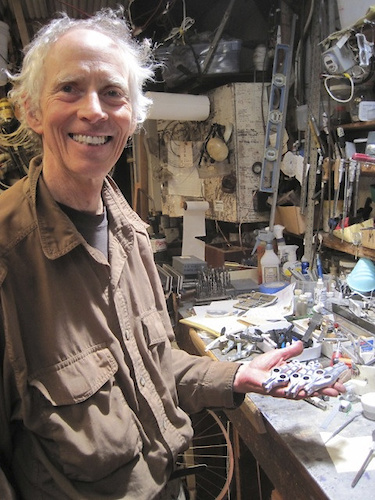
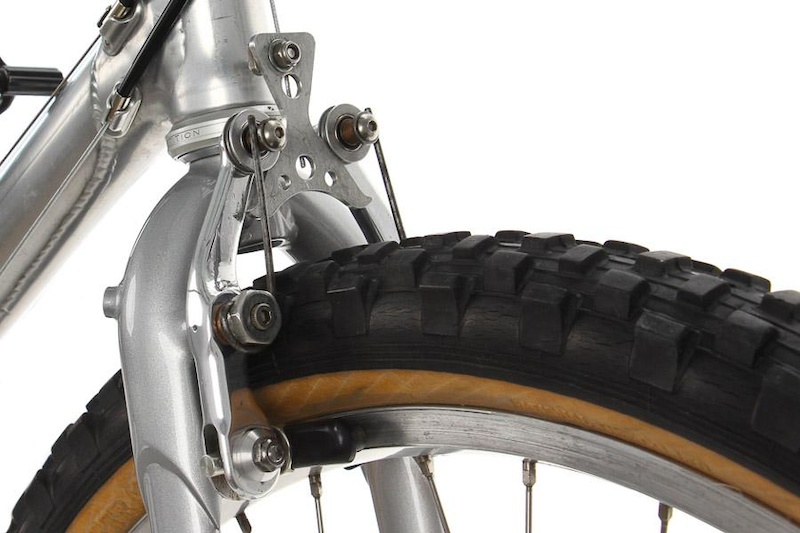
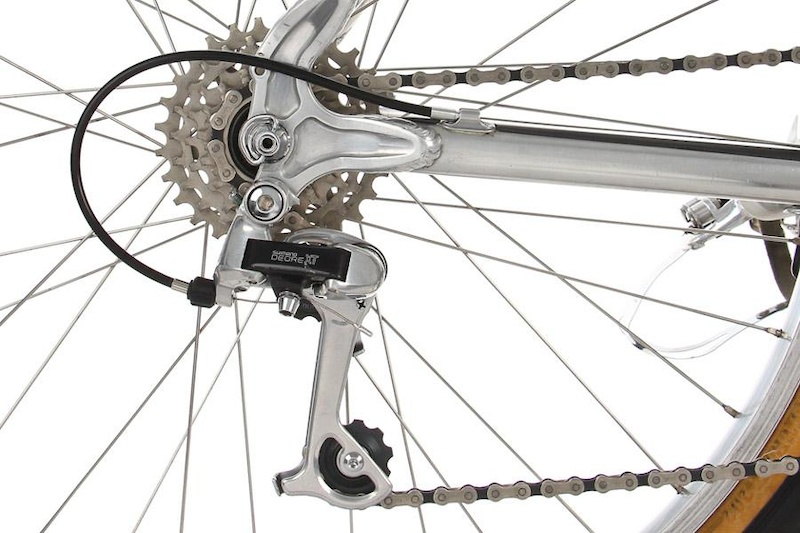

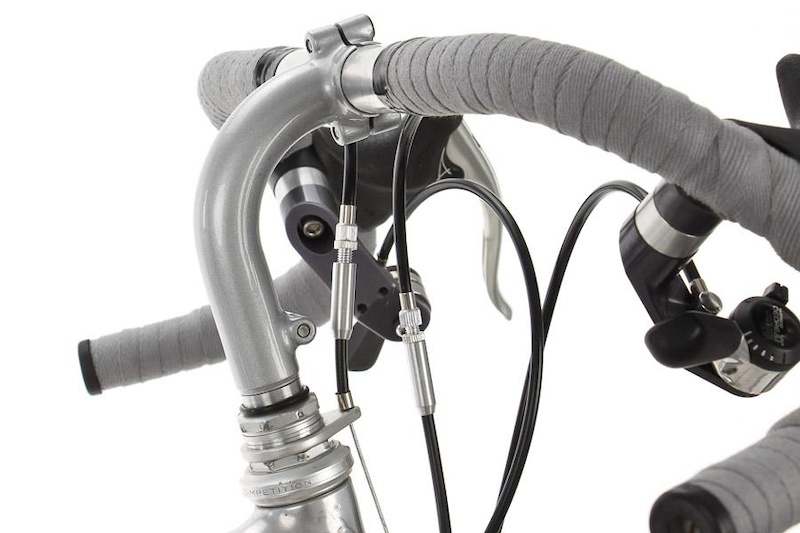

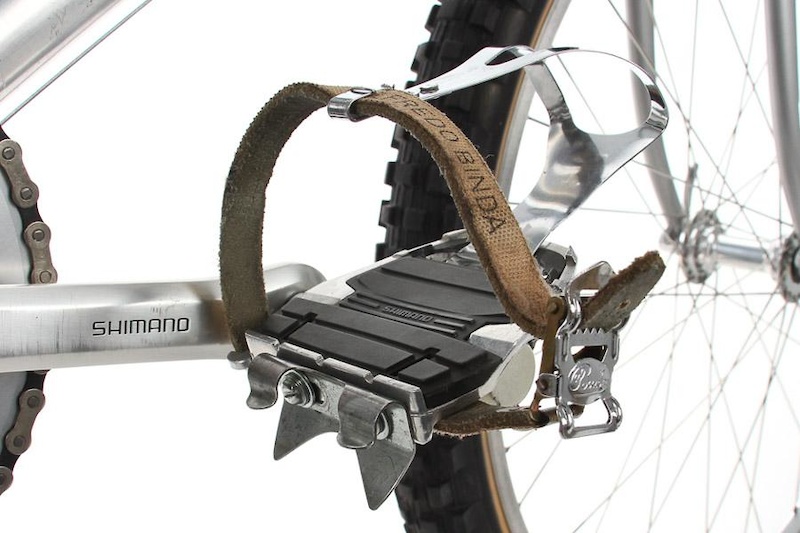
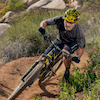
Yeah Charlie was doing shit way ahead of his time. A good 10-30 years ahead of his time. A true innovator.
BTW he has medical issues and needs funds:
www.gofundme.com/w85tn3dg
He had 141 or 140 rear in the mid-late 80's.
I know because I have had one of his bike.
When he had 135, all others were pretty much 130.
Yes but those were more advanced than nowdays clamp on.
For the curved stems, the top of the fork tube is tapered and the inside wall of the stem is conic. The stem was clamped with pinch bolts.
The straight stems (not in the pictures) had a similar system without any pinch bolts.
The stem was press fit on the fork.
With these you never had a loose headset and was a stiffer and lighter set up.
What about removable face plate stems when everybody else had pinch bolts?
Too long to mention everything he designed (also with Steve Potts)... Ground Control, Extreme Control etc. tries, 1988 (?) mtb geometry for Trek, helped Cannondale with their first mtbikes etc.
I can not think of any company or builder that can nearly reach his obsession with perfection and refinements.
Need to see his bikes in person to get a sense. Everything is modified to an extreme.
Donate and help this man out here:
www.gofundme.com/w85tn3dg
Oh yeah, and 2, count 'em 2, water bottles inside the frame triangle!!!!!
www.facebook.com/permalink.php?story_fbid=2188072224554720&id=166038966758066
Back when I was a super-noob high schooler reading MBA, of course you wanted a Stumpjumper because that was possibly semi-close to reality. Then you'd read about CC, Fat Chance, Yeti (before it seemed "Yeti")...and wondered why all these phenomenal ideas weren't trickling down (until 20+ years later). Wishing you could win just $5k in a lottery somewhere...
I wanna build a drop bar bike now.
JT: I didn’t have a very good race, actually. I was leading the first part of the cross-country race and flatted, so I think I finished sixth. I expected to be able to compete, to win the race, and it didn’t go that well for me. So I wasn’t too happy with that outcome. The downhill was okay, I think I was fourth in that, which was a reasonable result. I almost died that day, so it was good. I was riding drop bars back then, because I was riding on the road for the 7-Eleven team and I wanted my bikes basically identical. Riding a downhill world championship on drop bars is a little bit gnarly.
Road drop bars (maybe 44cm wide) and saddle to bar drop of 10+ cm.
The original off-road drop bars in comparison were 57cm wide and very flared. Saddle to bar drop is generally 0cm. Basically place the hands exactly where they go on a flat bar.
Total different beast.
if i were to race it against a contemporary hot hatch, like a focus rs/golf r or an sti or something, it would get smashed.
if i were to race it against a 2018 camry at a stoplight, itd get smashed.
so, id rather commute to my penthouse office with it
If you compare it with nowadays rigid (no front suspension) 26 xc/trail bikes I think you may end up with the advantage.
These were not 250 gto, more like a Formula 1 from the future.
Not a fanboy, I have ridden those bikes.
Your body is the best suspension.
A Ferrari 250 GTO runs a 5.4 sec 0-60 time and a 13.1 sec. 1/4 mile... hot hatches and camry’s Can’t “smash” those numbers.
Similarly, some of the fastest riders I know, ride and train on single speed fully rigid bikes.
Modern bikes are rad, but older bikes are still good.